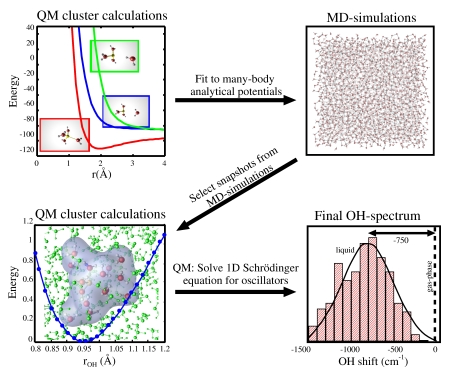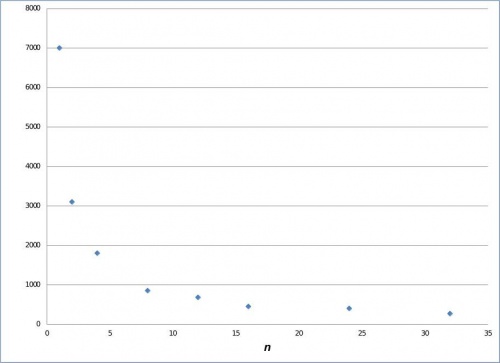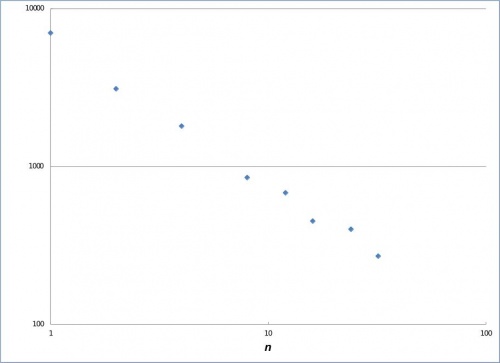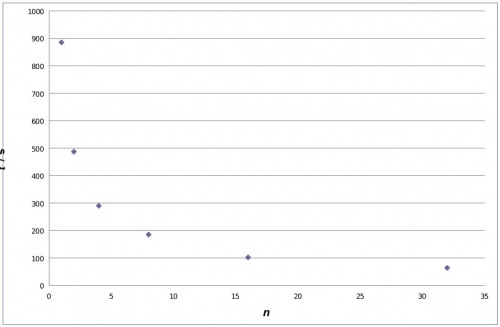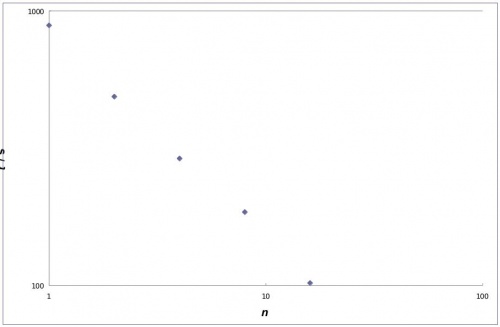HC-MD-QM-CS
From HP-SEE Wiki
General Information
- Application's name: Hybrid Classical/Quantum Molecular Dynamics – Quantum Mechanical Computer Simulation of Condensed Phases
- Application's acronym: HC-MD-QM-CS
- Virtual Research Community: VRC "Computational Chemistry"
- Scientific contact: Ljupčo Pejov, Anastas Mišev, ljupcop[@]pmf.ukim.mk, anastas[@]finki.ukim.mk
- Technical contact: Anastas Mišev, Ljupčo Pejov, anastas[@]finki.ukim.mk, ljupcop[@]pmf.ukim.mk
- Developers: Prof. d-r Ljupčo Pejov, Institute of Chemistry, Faculty of Natural Sciences and Mathematics, UKIM, Skopje, Macedonia, Prof. d-r Anastas Mišev, Faculty of Computer Science and Engineering, UKIM, Skopje
- Web site :
Short Description
HC-MD-QM-CS studies the properties of condensed phases, liquids (such as e.g. solutions of ions and various molecular systems in molecular liquids), solids (including small molecular systems adsorbed on surfaces), computer simulations, which use parallel numerical algorithms. Quantum molecular dynamics methods are based either on the BOMD (Born-Oppenheimer MD) or ADMP (Atom-centered density matrix propagation) approaches. Subsequently, high-level quantum mechanical calculations are carried out for selected configurations from MD runs, in which various systems’ properties are computed and analyzed. This include anharmonic vivrational frequencies, electronic transitions etc. In the QM calculations, usually first of even first+second solvation shells are explicitly included in the “wavefunction-based” region, while the bulk liquid or solid contributions are included either via charge field perturbation (i.e. charge embedding) or continuum solvation models. The overall objective of the work is to develop a novel general method for computation of complex in-liquid properties of the system, with potential applicability biomedical sciences, material science and engineering, catalysis, etc. Achieving good parallel efficiency for calculations of such type is far from a trivial task without the use of high-performance low-latency MPI interconnect (such as, e.g. a supercomputer or HPC cluster).
Problems Solved
The application deals with simulation of condensed phases and properties thereof relevant to biomedical sciences, material science and engineering, catalysis, etc.
Scientific and Social Impact
The described studies are of high fundamental significance, concerning the properties of condensed phases and influence thereof on various molecular species, but is also of high relevance to biomedical and materials science.
Benefits for the industry, especially catalysis and nanoelectronics.
Collaborations
University of Uppsala, Sweden
New York University
Beneficiaries
- Researchers in the field of biomedical sciences, material science and engineering, catalysis
- Manufacturers of catalysts and advanced materials
Number of users
5
Development plan
- Concept: The concept has been thoroughly planned before the official start of the project
- Start of alpha stage: M1-M6
- Start of beta stage: M7-M8
- Start of testing stage: M8-M9
- Start of deployment stage: M10-M11
- Start of production stage: M12-M24
Resource requirements
- Number of cores required for a single run: From 100 to up to 4000
- Minimum RAM/core required: 2-4 GB
- Storage space during a single run: 100 GB
- Long-term data storage: 2 TB
- Total core hours required: 10 000 000
Technical features and HP-SEE implementation
- Primary programming language: FORTRAN
- Parallel programming paradigm: MPI/OpenMP
- Main parallel code: MPI
- Pre/post processing code: Own developer
- Application tools and libraries: BLAS, LAPACK, SCALAPACK, FFT
Usage Example
A typical example of our complex sequential computational methodology is the calculation of OH vibrational spectra to investigate dilute aqueous solutions of four metal ions of particular importance in technical and biomedical contexts: Li+, Ca2+, Mg2+ and Al3+. This methodology is described in details in: Lj. Pejov, D. Spångberg, Kersti Hermansson, Al3+, Ca2+, Mg 2+, AND Li+ IN AQUEOUS SOLUTION: CALCULATED FIRST-SHELL ANHARMONIC OH VIBRATIONS AT 300K, J. Chem. Phys., 133, 174513 (2010). Experimental IR data for the first-shell water molecules are available for all these ions from investigations with the double-difference method and the isotopic isolation technique. Such spectra probe the local (and not-so-local) surroundings of the OH oscillators, and these four ions have been found to induce very different OH frequency shifts in their first hydration shells, from about –300 cm–1 for Ca2+(aq) to –830 cm–1 for Al3+(aq).
The purpose of this study is two-fold. First, we want to examine if our computational approach is good enough to reproduce the large span of IR frequency shifts demonstrated by the selected ions. Second, we want to extract knowledge that is (currently) not available from experiments, such as information about the ion–water, ion – water ··· water contributions to the total OH vibrational frequency shift.
Our computational method is summarized in Fig. 1, and consists of a combination of methods: Molecular dynamics (MD) simulations, quantum-mechanical (QM) calculations, and anharmonic OH vibrational frequency calculations. There are several consecutive steps in the method. (i) Many-body force-fields are derived from high-level ab initio calculations (frame 1 in Fig. 1). (ii) Classical MD simulations (frame 2) are performed. (iii) In the third step, first-shell water molecules are selected from the MD snapshots, and uncoupled, anharmonic O-H potential energy curves are calculated for these from ab initio calculations for large, embedded supermolecular clusters (frame 3). (iv) In the fourth step, the O-H vibrational energy levels for all these potential energy curves are calculated quantum-mechanically, the infrared band maximum is located and the average OH frequency shift, Dn(OH), with respect to the gas-phase recorded (frame 4). We will refer to this method as QMel + MD+ QMel + QMnuc. It is a rather sophisticated method for calculation of vibrational stretching bands in a liquid, since it accounts for the thermally induced solvent and solute dynamics, and treats the nuclear motions quantum-mechanically. Moreover, the MD-generated structures should be of a good quality, given that the force-fields are quite advanced.
Fig. 1. MD+QM scheme for the calculations of the OH vibrational spectrum for the first-shell hydration water around the cations in an aqueous solution. In fact what we use here is a QM + MD + QM scheme, plus a nuclear QM step at the end to get the vibrational OH spectrum.
As an example of our procedure, a theoretically calculated density-of-states (DOS) histogram of the uncoupled O-H stretching frequency distributions in the case of Ca2+(aq) is given in Fig. 2 a. In Fig. 2b, the IR intensity histogram computed at the B3LYP level is presented for Ca2+(aq), together with the fit to Gaussian probability distribution functions (PDFs).
Fig. 2 Theoretically calculated density-of-states (DOS) histogram of the uncoupled O-H stretching frequency distributions in the case of Ca 2+(aq) (a), the IR intensity histogram for Ca2+(aq) (b).
For Li+(aq), Ca2+(aq), Mg2+(aq), and Al3+(aq), our calculated IR frequency shifts, Dn(OH), with respect tothe gas-phase water frequency, are about –300, –350, –450 and –750 cm–1, compared to –290, –290, –420 and –830 cm–1 from experimental IR studies. The agreement is thus quite good, except for the order between Li+ and Ca 2+. Given that the polarizing field from the Ca2+ ion ought to be larger than that from Li+(aq), our calculated result seems reasonable.
To illustrate the effectiveness of our computational method, as well as its overall performance, experimental anharmonic uncoupled OH frequencies and the corresponding frequency shifts are plotted versus the theoretical ones in Fig. 3.
Fig. 3. Plot of experimental anharmonic uncoupled OH frequencies (a) and the corresponding frequency shifts (b) versus the theoretical ones.
Infrastructure usage
- Home system: HPCG
- Applied for access on: 09.2010
- Access granted on: 09.2010
- Achieved scalability: 64 cores
- Home system: HPGCC.FINKI (Macedonia)
- Applied for access on: 1.2012
- Access granted on: 1.2012
Running on Several HP-SEE Centres
Benchmarking activities and results
The computational methodology that we develop and use is a hybrid one, as explained elsewhere. It consists of several steps, each of which demands computational resources to a various extent, and scales rather differently with the number of processors/cores. As the procedure has not been fully automated yet, and due to the need to check certain results manually, it is possible that it could not be fully automated for a general case, it is best to judge on its overall scalability on the basis of scalability of its component phases. Such analysis, as explained below in this report, provides a good overview of the overall scalability of the method.
The first phase of the complex methodology involves classical or quantum molecular dynamics or Monte-Carlo simulation of the system in question. In this report, we will focus on the scalability of some quantum molecular dynamics approaches. We will discuss first the scalability of the Car-Parrinello molecular dynamics (CPMD).
Each CPMD simulation consists of two phases: wavefunction optimization and molecular dynamics simulation. As the optimization runs involve an iterative procedure that needs to converge, the number of iterations required to achieve final convergence being strongly dependent on the particular architecture, compilers and compilation parameters etc., this phase is strongly platform – dependent and not so suitable for benchmarking. Though in the future we aim to make careful comparisons of the optimization results as well, the main accent in the present report will be put on the molecular dynamics phase. To demonstrate the scalability of the approach, in Fig. 1 variation of the wall-clock computational time required to carry out an MD simulation of a modest-size water cluster (consisting of 32 water molecules) is plotted against the number of computing processes (processors/cores). Fig. 2 shows the same data, where both axes are logarithmic (log-log plot). The parallelization has been achieved by the MPI paradigm.
Computations involved in the phase of MD trajectory analyses, in the sense of checking the mutual statistic dependence of the snapshots are generally not much time- and resource-consuming, and therefore not much would be gained by their parallelization. Of course, other trajectory analyses, such as, e.g. analyses of the hydrogen bonding networks within a molecular liquid could benefit from parallelization.
The next phase of the methodology involves quantum mechanical computations either of the points on a grid of points to obtain the vibrational potential energy curve or surface, or single-point computations of other type (such as, e.g. time-dependent HF or DFT calculations of electronic spectra). So, the effectiveness of this phase heavily depends on the parallelization. To illustrate this point, as a typical example, we consider single-point energy calculations by Gaussian, required to be performed in order to obtain the vibrational potential energy curve or surface. Figs. 3 and 4 show the computational time required to carry out single-point Gaussian calculations at HF level of theory, for a system containing 10 non-hydrogen atoms, using a modest-size basis set, plotted vs. the number of cores, in linear and logarithmic scales.
Further computation of e.g. the vibrational frequencies (i.e. the energies of vibrational transitions) involves either standard diagonalization procedures or fourier-transform – based techniques. In general, in the case of one-dimensional problems, diagonalization and FFT computations are quick, and do not benefit much from parallelization. However, in the case of multi-dimensional vibrational problems, other techniques could be implemented, for which the scalability is significant.
Currently running on
- HPGCC.FINKI (Macedonia)
- Resource centre Debrecen SC
Other issues
The methodology has been successfully applied to realistic problems; the results are rather encouraging and imply that the current method could become the method-of-choice for treatment of a vast variety of scientific/engineering problems.
Achieved Results
Besides the below-mentioned papers, results have also been obtained and analyzed to some extent for a number of other systems. In this context, we will just mention the following results that are being finalized and prepared for publication:
- Solvation of pyrrole by carbon tetrachloride studied by hybrid classical or quantum molecular dynamics – quantum mechanical methods.
- Solvation of fluoroform and fluoroform – acetone dimers in liquefied krypton and argon.
- ND(H) vibrational frequency shifts in liquid ammonia.
- Cyanide ion in water – insights from combined MC-QM studies.
- Hydroxide ion in water by a hybrid MC-QM approach.
- Study of the solvent influence on intramolecular proton transfer processes by a sequential statistical physics – quantum mechanical approach.
- Study of NMR properties of hydrated aqueous Al 3+ ion.
- Investigating the possibility of using intramolecular oscillators as probes for internal electrostatic fields in liquids and solids
- Combining numerical approaches with the analytical ones to study oscillators in fluctuating environments
Publications and Presentations
- Lj. Pejov, D. Spångberg, Kersti Hermansson, Al3+, Ca2+, Mg2+, AND Li+ IN AQUEOUS SOLUTION: CALCULATED FIRST-SHELL ANHARMONIC OH VIBRATIONS AT 300K, J. Chem. Phys., 133, 174513 (2010).
- J. Tomlinson-Phillips, J. Davis, D. Ben-Amotz, D. Spångberg, Lj. Pejov, K. Hermansson, STRUCTURE AND DYNAMICS OF WATER DANGLING OH BONDS IN HYDROPHOBIC HYDRATION SHELLS. COMPARISON OF SIMULATION AND EXPERIMENT, J. Phys. Chem. A, 115, 6177-6183 (2011).
- K. Hermansson, P. A. Bopp, D. Spångberg, Lj. Pejov, I. Bakó, P. D. Mitev, THE VIBRATING HYDROXIDE ION IN WATER, Chem. Phys. Lett. (FRONTIER ARTICLE), included on the top cover of the Journal, 514, 1-15 (2011).
- P. Naumov, N. Ishizawa, J. Wang, Lj. Pejov, S. C. Lee, ON THE ORIGIN OF THE SOLID-STATE THERMOCHROMISM AND THERMAL FATIGUE OF POLYCYCLIC OVERCROWDED ENES, J. Phys. Chem. A, 115, 8563-8570 (2011).
- D. Sahpaski, Lj. Pejov, A. Misev, OPTIMIZATION OF INTERMOLECULAR INTERACTION POTENTIAL ENERGY PARAMETERS FOR MONTE-CARLO AND MOLECULAR DYNAMICS SIMULATIONS, Lecture Notes in Computer Science, 8th International Conference on Large-Scale Scientific Computations, Lecture Notes in Computer Science, Springer, in press, Sozopol, Bulgaria, 2011 (Conference proceedings from 8th International Conference on Large-Scale Scientific Computations, Sozopol, Bulgaria, 2011).
- A. Misev, D. Sahpaski, Lj. Pejov, IMPLEMENTATION OF HYBRID MONTE CARLO (MOLECULAR DYNAMICS) – QUANTUM MECHANICAL METHODOLOGY FOR MODELING OF CONDENSED PHASES ON HIGH PERFORMANCE COMPUTING ENVIRONMENT, ICT Innovations 2011, Advances in Intelligent and Soft Computing 150, 269-278, Springer-Verlag, Berlin-Heidelberg (Conference proceedings from ICT Innovations 2011, Skopje, Macedonia, 2011).
- J. Petreska, Lj. Pejov, COMPARISON OF METHODS FOR SOLVING THE VIBRATIONAL SCHRÖDINGER EQUATION IN THE COURSE OF SEQUENTIAL MONTE-CARLO-QUANTUM MECHANICAL TREATMENT OF HYDROXIDE ION HYDRATION, Macedonian Journal of Chemistry and Chemical Engineering, 29, 203-213 (2010).
- Biljana Bujaroska, Kiro Stojanoski, Ljupco Pejov, ON THE DIFFERENTIAL HYDRATION OF VARIOUS FORMS OF GLYCINE IN DILUTED AQUEOUS SOLUTIONS: A MONTE CARLO STUDY, Maced. J. Chem. Chem. Eng., in press.
Foreseen Activities
- hybrid classical molecular dynamics – quantum mechanical (both electronic and nuclear) study of liquid water, with a special emphasis on the OH stretching vibrational frequency shifts;
- hybrid Monte Carlo – quantum mechanical studies of solvation of various amino acids in neutral and ionized forms in diluted aqueous solutions with a special emphasis on the thermodynamics of hydration processes, in-liquid hydrogen bond formation, and preferential hydration of various ionic forms;
- sequential ADMP(or BOMD) – quantum mechanical study of intramolecular torsional motions in molecular switching systems in applied external electric fields;
- development of new methodology to study the influence of solvents on the dynamics of intra- and intermolecular proton transfer processes. This methodology will be based on application of the sequential MD/MC-QM approach, which will be implemented to compute the parameters characterizing the fluctuating proton-transfer potential (induced by the thermal motions within the liquid), in combination with the theory of stochastic fluctuating potentials.
- sequential statistical mechanics – quantum mechanical studies of molecules and molecular clusters in cage-like systems;
- sequential statistical mechanics – quantum mechanical studies of molecules and molecular clusters in liquid inert gases;
- study of the solvent influence on intramolecular proton transfer processes by a sequential statistical physics – quantum mechanical approach.
- computational study of NMR isotropic shielding constants of hydrated aqueous Al3+ ion by combined Monte Carlo – quantum mechanical approach.
- vibrational frequency shifts of various molecular species in solvents by a mean-field theory and combined MC(MD) – QM approaches.
